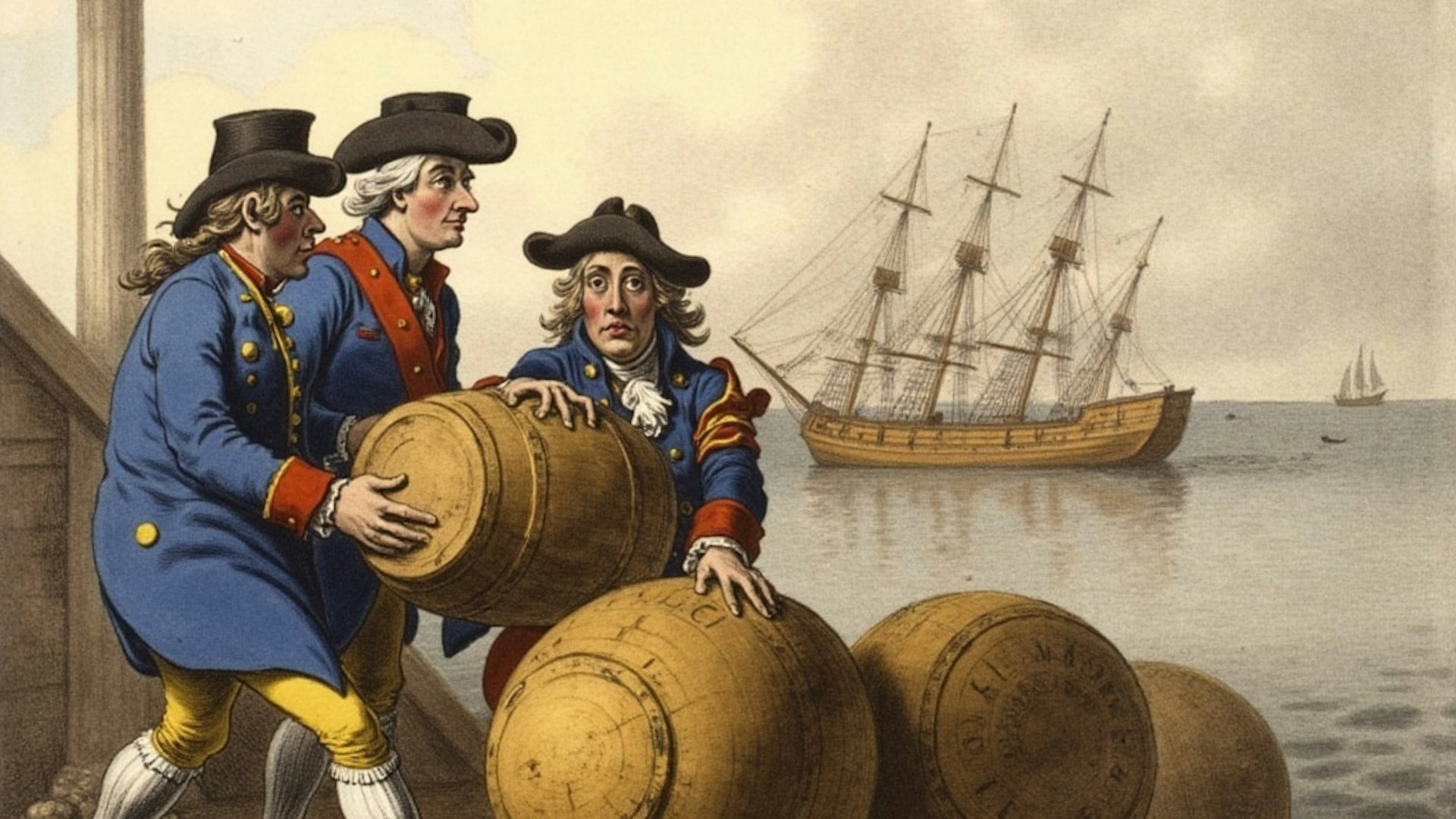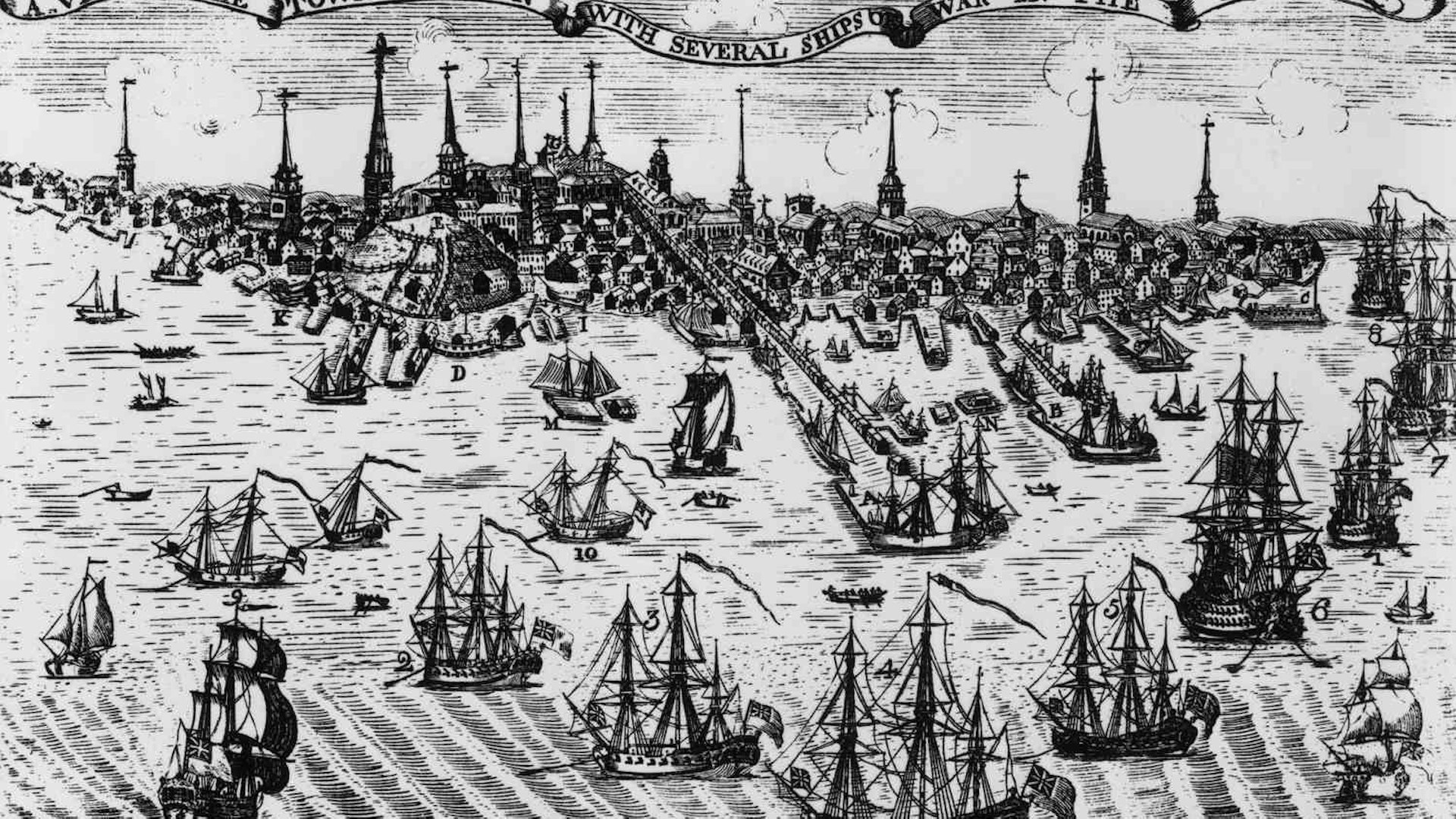The Rise of Colonial Rum
As early as the 17th century, American colonists discovered that molasses imported from the Caribbean could be transformed into a popular alcoholic beverage: rum. They had first encountered it through merchant ships and passing pirates docking in their ports. This discovery would change the fate of the colonies.
New England, in particular, enthusiastically embraced rum production. Distilleries multiplied, turning coastal cities like Boston into true rum capitals. Imagine the bustling activity of these ports, where barrels of molasses unloaded from ships were immediately transported to the many local distilleries.
One anecdote from the time claims that the streets of Boston were sometimes so saturated with the scent of molasses and rum that visitors could almost taste the air!
The Triangular Trade and Rum
Rum quickly became a key element of the infamous triangular trade. Ships left the colonies loaded with rum, traded it in Africa for slaves, then transported both the captives and fresh supplies of molasses back to the Caribbean to produce even more rum. This vicious cycle fueled the colonial economy—but at what human cost...

Rum Consumption Soars
The popularity of rum in the colonies was phenomenal. It is estimated that by the time of the American Revolution, each colonist consumed an average of 3.7 gallons of rum per year. It’s almost hard to imagine today!
Rum was everywhere: in taverns, on ships (where it was considered medicinal), and even at political gatherings. Some say that a few fiery speeches in favor of independence may have been inspired by glasses of this patriotic beverage!
Illegal Trade: A Challenge to the Mother Countries
One fascinating aspect of this history is the rise of a thriving illegal trade between the French Caribbean colonies and the British North American colonies. American colonists bought large quantities of molasses from French planters, who sold it at a lower price than their British counterparts.
This illicit trade greatly irritated the European mother countries. In response, Britain passed the Molasses Act in 1733, imposing heavy taxes on foreign sugar, molasses, and rum imported into British colonies. Meanwhile, France attempted to enforce the Exclusif, a restrictive trade policy designed to reserve colonial commerce for the French mainland.
Despite these efforts, smuggling continued to thrive. In Boston, for example, imports of foreign molasses skyrocketed from 3,000 barrels in 1725 to 20,000 in 1731!

The Taxes That Sparked Rebellion
In 1764, the Sugar Act replaced the Molasses Act. Although it cut the tax rate in half, it strengthened enforcement and penalties. This law was seen as a direct attack on the liberties and economy of the colonies.
From Molasses to Revolution
The taxation of molasses and sugar became one of the sparks that ignited the flames of revolution. Colonists, accustomed to economic independence, saw these laws as an attempt by the Crown to control and exploit them.
Figures like James Otis and Samuel Adams emerged, rallying behind the slogan "No taxation without representation." Rum, the emblematic drink of colonial freedom, became a symbol of resistance.
The Legacy of Colonial Rum
Ironically, after independence, rum production in the United States declined in favor of whiskey and bourbon. Yet the rebellious spirit born from this era endured.
Rum, crafted from Caribbean molasses and distilled in the crucible of the American colonies, played a crucial role in the birth of the United States. More than just a drink, it became the catalyst for a revolution that would change the course of world history.

